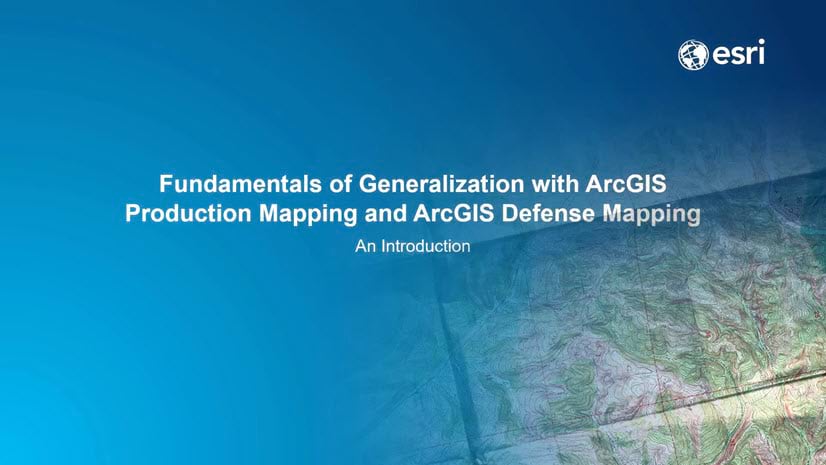Why should a water, wastewater or stormwater utility adopt the Local Government Information Model?
Easier Deployment
One of the biggest benefits of a water utility adopting the Local Government Information Model is that it makes deploying the ArcGIS for Water Utilities maps and apps easier, faster and cheaper. The further you deviate from the Local Government Information Model, and in particular it’s geodatabase schema, the harder it will be for you to implement the maps and apps that are part of ArcGIS for Water Utilities. It will also be hard and time consuming to upgrade your ArcGIS for Water Utilities implementation when we release updates.
Changes you make to the Local Government Information Model schema may necessitate extensive modifications of the maps documents, and changes to apps (web apps, mobile apps, ArcGIS Desktop, etc.) that are part of ArcGIS for Water Utilities. So the closer you stay to the core Local Government Information Model, the easier your initial deployment will be and the easier it will be to migrate your ArcGIS implementation to new releases or to deploy updates to the maps and apps.
It’s also important to note that when we say “adopt” the Local Government Information Model we don’t mean that you necessarily have to use it as is (or more appropriately – as downloaded). You probably will need to configure the Local Government Information to meet the needs of your organization. But the key thing to keep in mind is you should only be making changes to accommodate the true organizational needs of your utility. For example, instead of changing the field names to the field names you’d like to use in your organization, modify field and map layer aliases. Bottom line, don’t reinvent the wheel, just make changes that are required to meet specific business needs in your organization.
At the very least you need to change the projection to the appropriate coordinate system and set up the domains to reflect the assets in use at your utility. Small utilities or utilities that are new to GIS may choose to take the Local Government Information Model as is, while larger utilities, mature GIS implementations, or GIS implementations that are integrated with other enterprise system will undoubtedly need to make more significant configurations or extensions to the schema to reflect their organizational needs.
Water, Sewer and Stormwater Data Modeling Best Practices
The Local Government Information Model incorporates many best practices for water utility GIS. One of the most important best practices is how to represent a water, sewer or stormwater system in GIS.
For years Esri had downloadable data models for water, wastewater and stormwater utility networks. Those data models were the first freely available water utility GIS data models. They were stewarded by Esri, but built by the user community and became the industry standard. Globally thousands of water utilities have built their GIS around Esri’s free data models.
The Local Government Informational Model is the next iteration of Esri’s water, sewer and stormwater data models. In essence we’ve modernized the data models to reflect how water utilities have been deploying GIS over the past few years and we’ve also modified the schema to fit the requirements of the ArcGIS for Water Utilities maps and apps. As water utility GIS continues to evolve Esri will regularly maintain the Local Government Information Model to keep introducing new best practices into the user community and functionality into our apps.
Comprehensive Data Model
There is no doubt Esri’s water, wastewater and stormwater data models were an incredibly valuable starting point for water utilities to get their utility networks into GIS. Since the original data models focused primarily on a data structure for the assets that comprise utility networks, we received feedback that many utilities wanted more guidance on how to model operational data (workorders, service requests, customer complaints, main breaks, capital improvement projects, etc.) and base data (roads edge of pavement, road centerlines, elevation data, parcels, etc.) in their GIS. The Local Government Data Model solves this problem because it includes a complete schema for typical water utility base data and operational data.
Over the years, an observation we’ve made is that water utilities struggle with how to model and manage schemas for datasets that aren’t their utility networks or operational data – simply put managing base data can be a challenge for water utilities. For example we’ve seen a lot of utilities struggle with managing roads, parcel, buildings, etc. in their enterprise GIS, especially when these datasets are coming from other organizations or departments.
This is a particular issue for water utilities that serve multiple units of local government such as authorities, county wide utilities, state wide utilities and private companies. A good example of this is a water authority whose service territory includes three counties. The water authority needs parcel data that is maintained by the counties. County A, County B and County C all use different schemas for their parcels. So the water utility had two choices – leave the parcels in 3 different data layers and use them as is – which makes analysis, map creation and integration with other systems at the utility that need parcel data (such as a customer information system) difficult. Or invest time to extract, transfer and load (ETL) the parcels into a common schema so they can be used as a single seamless layer across the service area. The Local Government Information Model can now serve as the common schema in this example.
Easier Data Sharing
We describe the Local Government Information as a harmonized information model – meaning designed to accommodate typical GIS needs across local government. If organizations that commonly share data all adopt the Local Government Information Model, it will greatly reduce the time and resources spent establishing a common schema and migrating data to these schemas – thus allowing water utilities to focus on the maintenance and management of their authoritative data.
For example a private water utility may serve two municipalities. If the water utility and both municipalities all adopt the Local Government Information Model then they can all very easily exchange data. When the water utility needs road centerline and edge of pavement layers from the municipalities than the utility can just import the new data without having to manipulate the schema and will have seamless layers for their service areas. The same logic applies to the water utility sharing data with the municipalities – when the water utility updates the location of their upcoming capital projects, the utility can share that data back with the municipalities and the municipalities can use it without any schema manipulation.
Best Cartographic Practices for Water Utility Maps
As we’ve discussed in a previous blog, the Local Government Information Model includes geodatabase schema, map documents and specification for services necessary to deploy the ArcGIS for Water Utilities and ArcGIS for Local Government maps and apps.
The map documents highlight
best practices for displaying water, wastewater and stormwater data in the context that each map is designed to be used. For example the map documents included with the Mobile Map Template have best practice cartography for displaying water utility GIS data in the field in both a day and night time use map. The same goes for the map document included with the Infrastructure Editing Template – this is a best practice map document for editing water utility data with ArcGIS Desktop.
Looking to the Future
The specification for the services (map, feature, geoprocessing, etc) necessary for the ArcGIS Water Utilities maps and apps are also part of the Local Government Information Model. So if other local government entities in the service area of water utility embrace the Local Government Information Model, ArcGIS for Local Government and start to publish services, then water utilities can consume those services for their maps and apps. In this scenario the water utility may no longer have to import some data into their own geodatabase and can just consume the services right from the organization that is the steward of the data.
We hope you’ve found this exploration of some of the benefits water, wastewater and stormwater utilities will experience when adopting the Local Government Information Model helpful. We encourage your feedback on the information in this blog, the Local Government Information Model or ArcGIS for Water Utilities.


Commenting is not enabled for this article.